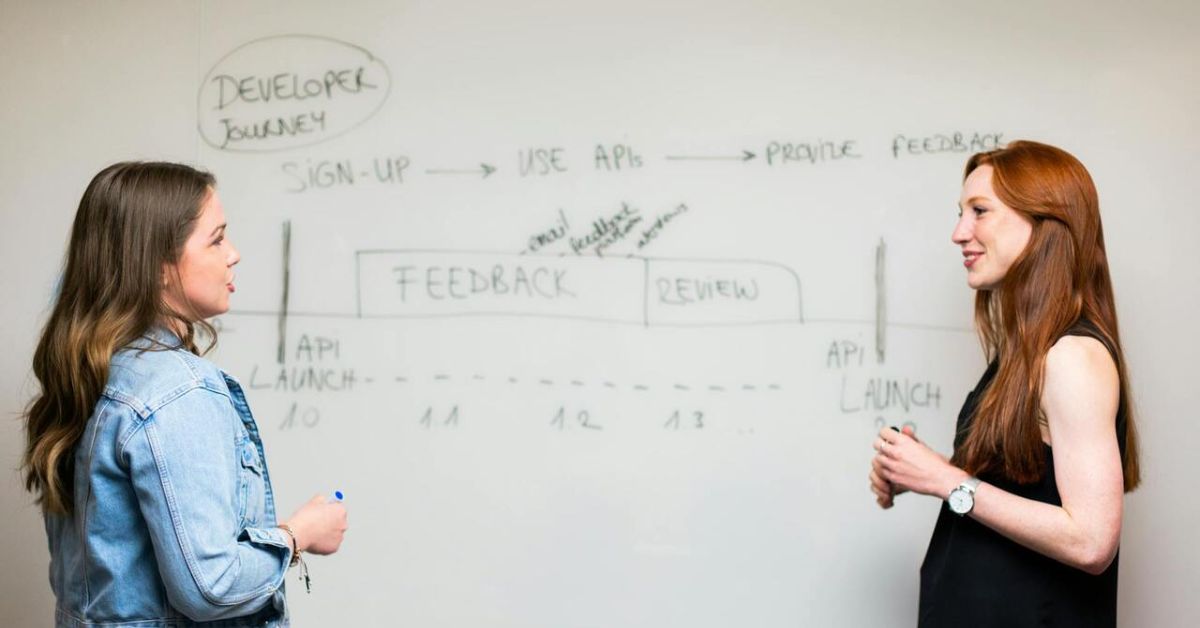For better or worse, a push for digital transformation is often synonymous with developing a new app. Apps are expensive, and despite large investments, many continue to fail. This might be because they don’t meet user needs, or because they don’t achieve business goals.
Digital dead ends are expensive, and the problem often isn’t the technology itself but a more general disconnect from the humans it’s supposed to serve. Design Thinking is proposed as the way around this; a north star that helps keep us on track even when development gets messy and complex. But Design Thinking isn’t magic, and its power lies in selecting and tailoring the right approach for your specific project.
Design thinking fundamentals
Design Thinking is simply a way of saying you’re using an iterative, problem-solving process. It prioritizes understanding users, and this can mean challenging assumptions and redefining problems.
The goal here is to identify alternative strategies that might not be instantly apparent, but in the end, make sense for the both the user and the business goals. The phases of this approach begin with empathizing, defining the problems, and then it’s all about prototyping, testing, getting feedback, and then iterating. But be warned, the process is rarely linear.
The key principle that matters most is having an intense user focus along with collaboration and rapid iteration. Apps are slow to build, and complex, so this helps keep things both swift and with one eye always on the main issue at hand.
This can save costly development cycles which are spent on unvalidated ideas or making poor design choices; poor choices that, because of the fallacy of sunk costs, developers may stick with.
Why a “one-size-fits-all” design thinking approach fails
Design Thinking is not a single checklist. It’s a flexible mindset, and sometimes a toolkit, but not a strict recipe. Different app projects, even with the same digital transformation motivations, will have their own unique demands. Some aim for radical market disruption, while others focus on optimizing existing processes. Resources, time, skills and budget all vary significantly, because in 2025, even the smallest of businesses are “forced” through digital transformation.
Leveraging expertise
The chances of successfully implementing Design Thinking, especially for complex digital transformations, can be increased when seeking help. Internal teams may lack specific skills or bandwidth, and this is where firms like IDEO show their value, or Frog Design, which is known for innovation and design capabilities. MakingSense – Digital Transformation is a growing option in California, as they focus on growth-led transformation that is user-centric.
Larger consultancies like Accenture Interactive or Deloitte Digital do integrate Design Thinking into broader digital transformation strategy, though it’s often larger firms that use these expensive industry leaders.
Factors influencing your design thinking approach
Although a consultant will certainly help, many still go at it alone. In either case, you need to be thinking about your project goals and scope. Are you aiming for breakthrough innovation or just incremental optimization? Do you have the idea and don’t know where to start, or are you simply being held back by an existing, outdated app? Building an entire app ecosystem from scratch requires a different depth than adding some new features.
You also need to assess problem clarity. Is the user need and business problem well-defined, or are you trying to figure out a so-called ‘wicked problem’ with many unknowns? Ambiguity demands more upfront empathy and definition, and this takes time and care.
Of course, resources and constraints are going to define your approach too. Design thinking is great for tight deadlines, but it might necessitate faster cycles like a Design Sprint. Limited budgets mean you may opt for leaner methods and ruthless prioritization. Ultimately, your team’s experience with Design Thinking is going to play a role here.
Common design thinking frameworks
Several established frameworks can guide you, but remember that they’re adaptable toolkits, not rigid rules. The Stanford d.school Model (Empathize, Define, Ideate, Prototype, Test) is excellent for tackling complex and ambiguous problems. It tends to suit projects where deep user understanding is a priority. The Double Diamond (Discover, Define, Develop, Deliver) model is more about distinct phases of divergent (exploring options) and convergent (making choices) thinking, both in terms of the problem and solution. It provides structure, particularly for larger projects, or with teams needing a clear roadmap. Finally, the Google Ventures (GV) Design Sprint is more rigid than the others, and a very time-sensitive process (often five days) which focuses on answering business questions through rapid prototyping and user testing. This is great for validating high-risk ideas and smashing through analysis paralysis.
Choose carefully for transformative results
There is no single, best approach, particularly when it comes to app development, which is a field that is constantly shape-shifting. The most effective strategy will arise after you assess your goals and constraints. For help with this, a consultant can often be worthwhile, else you will need to look deeply into different frameworks after defining your own situation.











